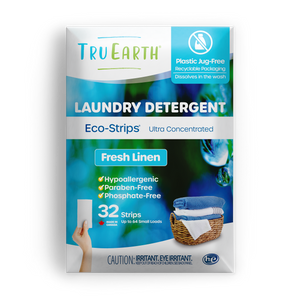Water stains on wood surfaces can be a frustrating sight, whether it's a coffee ring on your coffee table or a watermark on your wooden floor.
We are here to guide you through the process of effectively removing these pesky stains and restoring your wood to its former glory. In this blog, we'll cover various methods and tips to ensure your wood looks as good as new.

Understanding Water Stains on Wood
Before we explore the cleaning methods, let's understand the two types of water stains you may encounter:
White Water Stains
White water stains are typically the result of moisture that gets trapped in the finish or uppermost layer of the wood. This moisture creates a cloudy or white mark on the surface, and it's often caused by placing a wet object on the wood without a protective barrier.
Dark Water Stains
Dark water stains, on the other hand, occur when water penetrates deeper into the wood, causing discoloration. These stains are often more stubborn to remove and are usually the result of prolonged exposure to moisture, such as a spill that wasn't promptly cleaned up.
Tools and Materials You'll Need
Gather the following items before starting the stain-removal process:
- Soft Cloths: Lint-free, soft cloths are essential for gentle cleaning without scratching the wood.
- Distilled Water: Distilled water is free from minerals and impurities, making it ideal for stain removal.
- Mild Soap: A gentle, pH-neutral soap will help with cleaning without harming the wood's finish.
- Hydrogen Peroxide: For stubborn stains, you'll need hydrogen peroxide to help lift them.
- Baking Soda: Baking soda is an effective natural abrasive that aids in cleaning.
Removing White Water Stains
Let's start with white water stains, the cloudy marks that can appear on wood surfaces:
Blot the Stain
Place a soft, dry cloth over the stain and gently press to soak up any surface moisture. Do not rub, as this can worsen the stain.
Use a Hair Dryer
Set your hair dryer to low and hold it several inches away from the stain. Gently warm the area, moving the dryer in a circular motion. Continue until the stain disappears. The heat helps to evaporate the trapped moisture.
Create a Baking Soda Paste
Mix a tablespoon of baking soda with a few drops of water to create a paste. Apply the paste to the tarnished area, and gently rub with a soft cloth, moving in the direction of the wood grain. Baking soda acts as a mild abrasive, aiding in stain removal.
Wipe Clean
Once the stain is gone, wipe the area clean with a damp cloth. Dry it thoroughly to prevent new stains from forming. This step is essential, as any remaining moisture can lead to further stains.
Tackling Dark Water Stains
Dark water stains require a bit more effort, but they can still be effectively removed:
Mix Hydrogen Peroxide and Baking Soda
Create a paste by combining equal parts hydrogen peroxide and baking soda until you have a thick consistency. This powerful combination helps break down and lift dark stains.
Apply the Paste
Apply the paste to the dark water stain, ensuring it covers the entire affected area. Let it sit for several hours or overnight to allow the mixture to penetrate the wood.
Gently Rub
Using a soft cloth or a soft-bristle toothbrush, gently rub the paste into the stain in a circular motion. Be patient, as this process may take some time, especially for older or deep-set stains.
Wipe Clean
Once the stain is gone, wipe the area clean with a damp cloth. Dry it thoroughly. Inspect the area closely to ensure the stain has been completely removed before proceeding.
General Wood Stain Prevention Tips
To prevent water stains from occurring in the first place, consider these tips:
Use Coasters and Trivets
Place coasters under drinks and trivets under hot dishes to protect your wood surfaces. Coasters and trivets act as barriers, preventing direct contact between moisture and the wood.
Wipe Up Spills Immediately
Act quickly to wipe up any spills or moisture on wood surfaces to prevent stains from forming. The longer moisture sits on the wood, the higher the chances of staining.
Apply Protective Finish
Consider applying a protective finish, like wax or polyurethane, to your wood surfaces to create a barrier against moisture. These finishes not only protect your wood but also enhance its appearance.

Final Thoughts
With the knowledge and methods outlined in this blog, you can confidently tackle water stains on your wood surfaces.
Whether you're dealing with white or dark water stains, following these steps will help you restore your wood to its natural beauty and keep it looking its best for years to come. Remember, patience and gentle care are key when dealing with wood, so take your time, and your wood will thank you with its renewed luster and charm.


